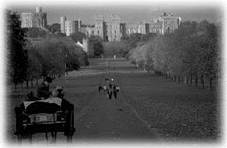Great Britain

“Great Britain” has several different names. Some people say “Britain”, or “the United Kingdom”, or just “UK”. There are four different countries in the United Kingdom: England, Scotland, Wales and Northern Ireland.
Everyone from Britain is British, but only people from England are English. People from Scotland are Scottish, people from Wales are Welsh, and people from Northern Ireland are Irish. Don't call a Scottish or Welsh person English. He won’t like it!
Altogether more than 56 million people live in Britain, many of them in big industrial cities like London, Liverpool and Manchester, but people are often surprised by how much of Britain is open country, with lovely hills and woods, quiet rivers, lakes and farmlands.
Everyone in Britain speaks English. But in some parts of Scotland and Wales people speak an older language as well. The Welsh are especially proud of their language, and you can see road signs in Welsh all over Wales.
Everyone speaks English, but they do not all speak it in the same way. A Scottish person has to listen carefully if he wants to understand a Londoner. And when a Welsh person speaks, everyone knows at once where he comes from!
Many people think that the weather is cold and wet in Britain all the year round. But it isn't! True, it sometimes rains and even snows for days and days, but every year there are weeks of beautiful sunny weather when the British put on their bikinis and go out to sunbathe.
Britain is only a small country, but every part is different. Scotland is a land of mountains, lakes and romantic castles. The winters are cold, with plenty of snow, but the summers are often warm and sunny. Most farmers keep sheep, and there are many small factories which make fine sweaters from their wool. In some parts of Scotland, there are very few people. Deer live in the hills, and the rivers are full of fish. But Glasgow and Edinburgh are both large and busy, with all that is good (and bad) in modern cities.
Northern Ireland has its problems, but it has beauty too. In the warm, wet climate, the grass grows a brilliant green, and much of the land is farming country. Belfast is a large industrial city with many fine buildings and a big port from which ships come and go to Scotland and England. But Belfast has had many difficult years, and it is not the busy place it once was.
In the north of England there are many old industrial towns. Now, a great number of factories have closed and thousands of people have no work. Some have moved to the new towns, built in the 1960s and 1970s, where the industries are more modern. Outside the towns, much of this part of England is beautiful countryside, with green hills, lakes and sandy beaches. Fishing is an important industry in the North East, and every night (except Sunday) the fishing boats go out to sea.
The centre of England (the “Midlands”) is also an important industrial area, especially near the huge cities of Coventry and Birmingham, the centre of the car industry. But everywhere, even in the heart of a modern city, there are buildings from an older Britain — cathedrals, castles, and houses built hundreds of years ago.
Wales is a special place, a country of high mountains and pretty valleys. But Wales has plenty of industry too, with many factories and coal mines. The people of Wales are very musical. Every year they have a festival of Welsh music and poetry called an “Eisteddfod”.
The west of England is rich farming country. It produces milk, cream, butter, cheese and apples, which go to make cider, a popular drink. In the villages, country people often grow their own fruit, vegetables and flowers.
Some areas of Britain are very crowded. Around Manchester, in northwest England, and Glasgow, in Scotland, are large city areas of houses and factories. The southeast of England, too, has many towns and cities, including London, the giant capital. But quite near London there are still some quiet villages and peaceful farms.
Britain is an island, of course, and you are never far from the sea. Some of the coast, especially in the west, is wild and rocky, with small, sandy beaches, and romantic old harbours. Other parts are industrial. The east coast of Scotland, for example, is busy with oilrigs and fishing boats. The most popular beaches are near the many holiday towns on the south coast, where the weather is usually warmer. It is here that Londoners come to relax.
London London has been a capital city for nearly a thousand years, and many of its ancient buildings still stand. The most famous of these are the Tower of London, Westminster Abbey and St. Paul's Cathedral, but most visitors also want to see the Houses of Parliament, Buckingham Palace (the Queen's London home) and the many magnificent museums.
Once, London was a small